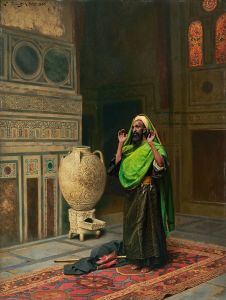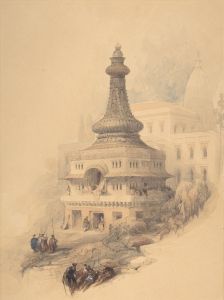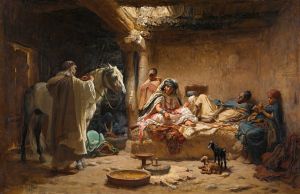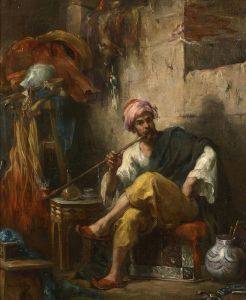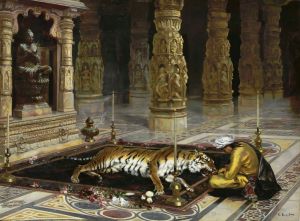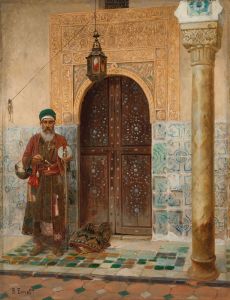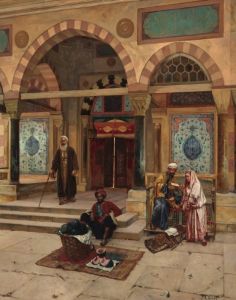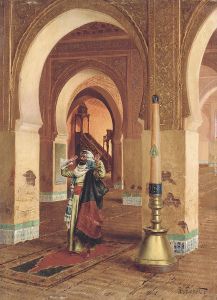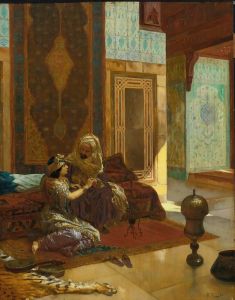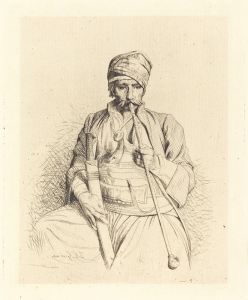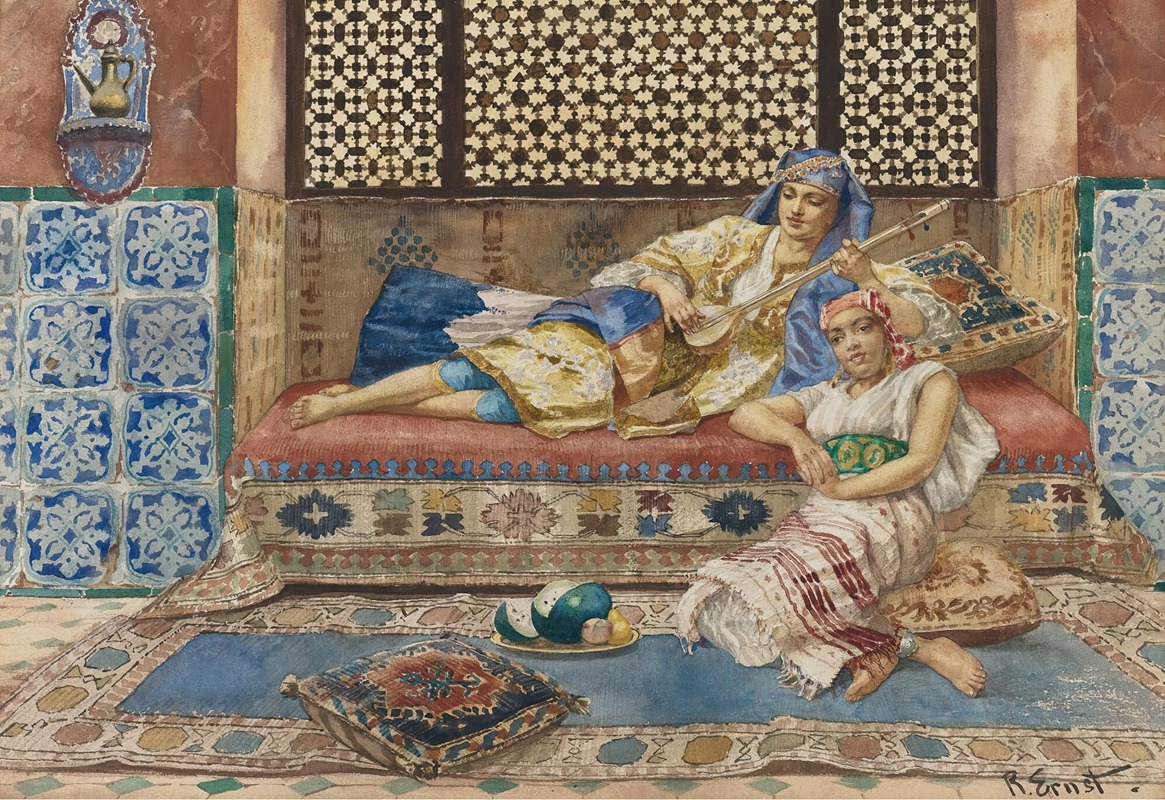
Harem song
A hand-painted replica of Rudolf Ernst’s masterpiece Harem song, meticulously crafted by professional artists to capture the true essence of the original. Each piece is created with museum-quality canvas and rare mineral pigments, carefully painted by experienced artists with delicate brushstrokes and rich, layered colors to perfectly recreate the texture of the original artwork. Unlike machine-printed reproductions, this hand-painted version brings the painting to life, infused with the artist’s emotions and skill in every stroke. Whether for personal collection or home decoration, it instantly elevates the artistic atmosphere of any space.
Rudolf Ernst (1854–1932) was an Austrian painter known for his Orientalist works, which often depicted scenes inspired by the Middle East, North Africa, and the Islamic world. His paintings are characterized by their meticulous attention to detail, vibrant colors, and romanticized portrayals of exotic settings. One of his notable works is Harem Song, which exemplifies his fascination with the themes and aesthetics of the Orient.
Harem Song is an oil painting that portrays a serene and intimate moment within a harem setting. The composition features a group of women, often interpreted as members of a harem, gathered in an opulent interior. At the center of the scene, a woman is depicted playing a musical instrument, possibly a lute or a similar stringed instrument, while others listen attentively or engage in quiet activities. The painting captures a sense of harmony and leisure, emphasizing the cultural and artistic practices of the imagined setting.
Ernst's attention to detail is evident in the intricate patterns of the textiles, the ornate architectural elements, and the rich palette of colors used in the painting. The artist's skill in rendering textures, such as the softness of fabrics and the sheen of metallic objects, adds to the immersive quality of the work. The setting is adorned with elements that suggest luxury and refinement, including elaborate carpets, decorative tiles, and finely crafted furniture.
As an Orientalist painter, Rudolf Ernst was part of a broader movement in 19th-century European art that sought to depict the cultures and landscapes of the East. However, it is important to note that Orientalist art often reflected the Western artists' romanticized and idealized perceptions of the East, rather than an accurate or authentic representation of the cultures they portrayed. Ernst, like many of his contemporaries, drew inspiration from travel, literature, and artifacts, but his works were shaped by the tastes and expectations of European audiences of the time.
While Harem Song is celebrated for its technical mastery and aesthetic appeal, it is also a product of its historical context, reflecting the fascination and misconceptions that characterized Orientalist art. Today, the painting is appreciated both as a work of art and as a historical artifact that offers insight into the cultural dynamics of its era.





